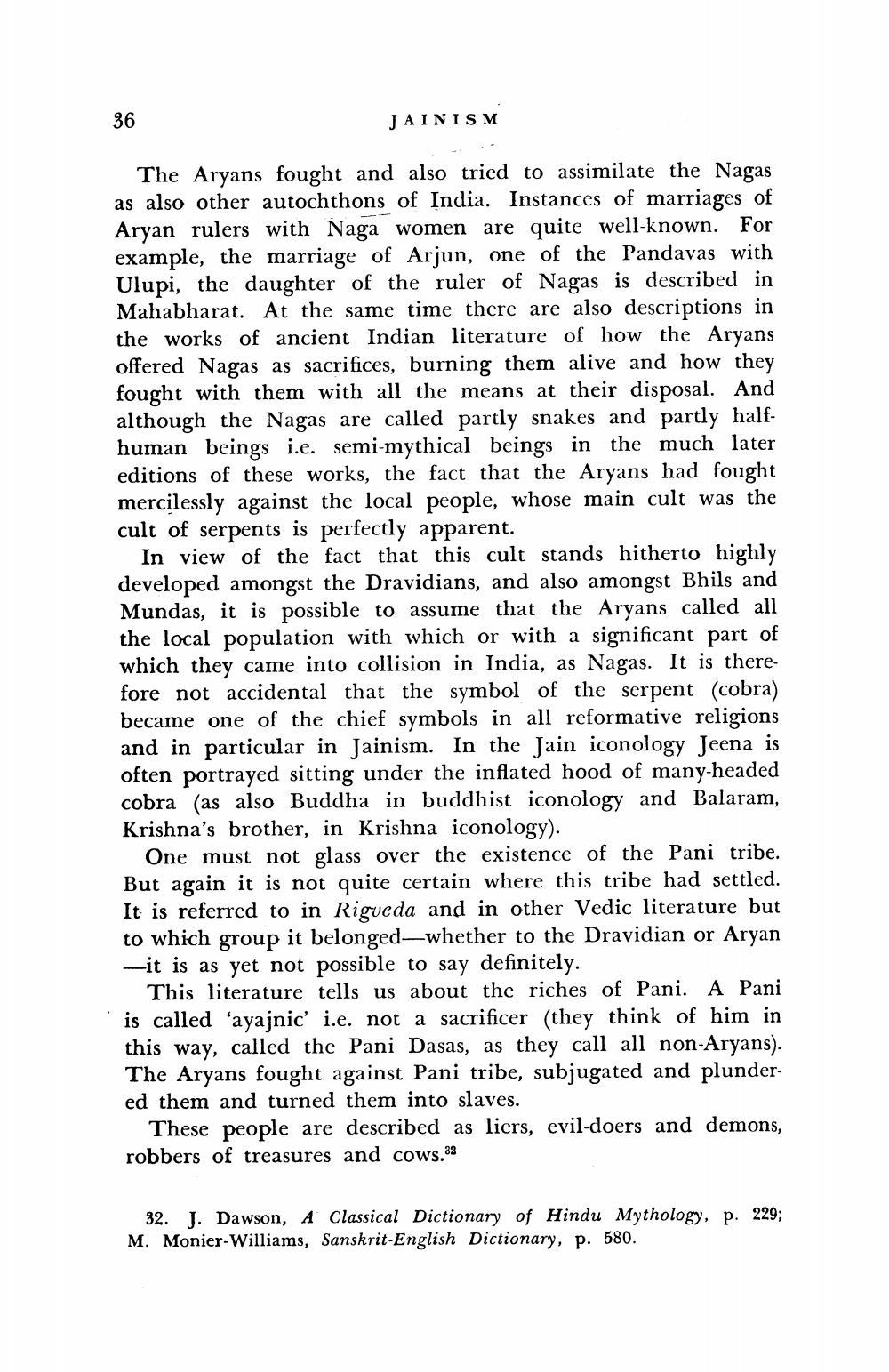________________
36
JAINISM
The Aryans fought and also tried to assimilate the Nagas as also other autochthons of India. Instances of marriages of Aryan rulers with Naga women are quite well-known. For example, the marriage of Arjun, one of the Pandavas with Ulupi, the daughter of the ruler of Nagas is described in Mahabharat. At the same time there are also descriptions i the works of ancient Indian literature of how the Aryans offered Nagas as sacrifices, burning them alive and how they fought with them with all the means at their disposal. And although the Nagas are called partly snakes and partly halfhuman beings i.e. semi-mythical beings in the much later editions of these works, the fact that the Aryans had fought mercilessly against the local people, whose main cult was the cult of serpents is perfectly apparent.
In view of the fact that this cult stands hitherto highly developed amongst the Dravidians, and also amongst Bhils and Mundas, it is possible to assume that the Aryans called all the local population with which or with a significant part of which they came into collision in India, as Nagas. It is therefore not accidental that the symbol of the serpent (cobra) became one of the chief symbols in all reformative religions and in particular in Jainism. In the Jain iconology Jeena is often portrayed sitting under the inflated hood of many-headed cobra (as also Buddha in buddhist iconology and Balaram, Krishna's brother, in Krishna iconology).
One must not glass over the existence of the Pani tribe. But again it is not quite certain where this tribe had settled. It is referred to in Rigveda and in other Vedic literature but to which group it belonged-whether to the Dravidian or Aryan -it is as yet not possible to say definitely.
This literature tells us about the riches of Pani. A Pani is called 'ayajnic' i.e. not a sacrificer (they think of him in this way, called the Pani Dasas, as they call all non-Aryans). The Aryans fought against Pani tribe, subjugated and plundered them and turned them into slaves.
These people are described as liers, evil-doers and demons, robbers of treasures and cows.32
32. J. Dawson, A Classical Dictionary of Hindu Mythology, p. 229; M. Monier-Williams, Sanskrit-English Dictionary, p. 580.




